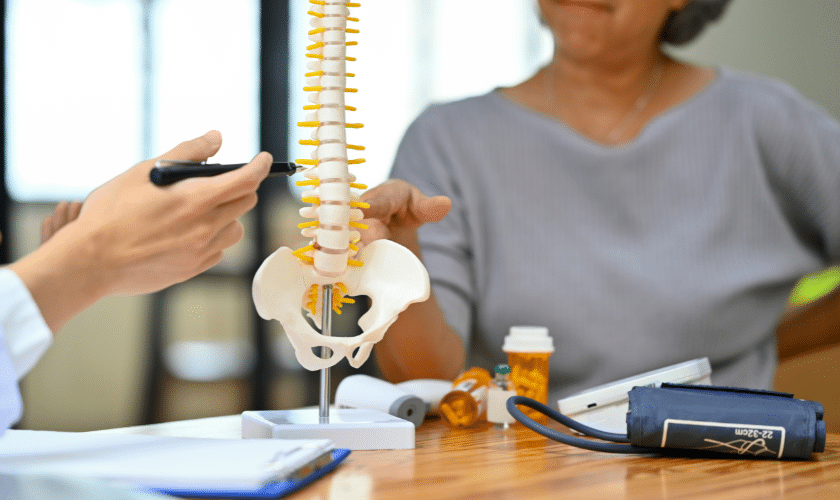
Back Pain Got You Down? Recognizing a Herniated Disc and How Chiropractic Care Can Help
Lower back pain is a common complaint, affecting millions of people globally. While there are many potential causes, a herniated disc can be a culprit for

Lower back pain is a common complaint, affecting millions of people globally. While there are many potential causes, a herniated disc can be a culprit for some. This blog post will delve into the signs and symptoms of a herniated disc, explore how chiropractic care can be a valuable tool in managing the condition, and offer tips for back pain prevention.
The spine is a marvel of engineering, providing structure and support to our bodies while enabling movement. It’s made up of 24 bones called vertebrae, stacked on top of each other with cushions between them known as intervertebral discs. These discs are vital, acting as shock absorbers and allowing for smooth spinal flexion, extension, and rotation.
Each disc has a tough, fibrous outer ring and a soft, gel-like inner core. A herniated disc occurs when some of the inner core material pushes through a tear in the outer ring. This can irritate nearby nerves, leading to pain, weakness, numbness, or tingling in the back and legs.

A herniated disc occurs when the soft inner gel of a spinal disc pushes through a crack in the tougher exterior casing. This can irritate nearby nerves, leading to pain and discomfort. Identifying the symptoms early can help in seeking timely treatment.
Common Symptoms

Chiropractic care focuses on the musculoskeletal system and the nervous system’s connection to it. Chiropractors are trained to identify and address misalignments in the spine, known as subluxations. These misalignments can put stress on the discs and nerves, potentially contributing to pain.
Also known as chiropractic adjustment, spinal manipulation involves the application of controlled force to a spinal joint. This can help improve alignment, reduce nerve irritability, and restore range of motion.
This gentle, non-thrusting technique involves a specialized table that distracts and flexes the spine in a rhythmic motion. It is particularly effective for treating herniated discs, as it helps create a negative pressure within the disc, which can help pull the herniated portion back into the disc and reduce pressure on the nerves.
Chiropractors often prescribe specific exercises to help strengthen the muscles surrounding the spine. These exercises can support spinal health, enhance flexibility, and reduce the likelihood of future disc problems.

Not all back or neck pain is due to a herniated disc, but it’s important to seek professional help if you experience persistent pain. If the pain is accompanied by numbness, tingling, or weakness, or if it interferes with daily activities, it’s time to consult a chiropractor.
Here’s how chiropractic care can be beneficial for managing a herniated disc:
It’s important to note that chiropractic care is not a one-size-fits-all solution for herniated discs. While it can be a valuable tool, it’s often most effective when combined with other treatment approaches. These might include:
In severe cases, surgery might be necessary to repair the herniated disc. However, chiropractic care can still play a supportive role in recovery after surgery.
Here are some tips to help prevent herniated discs:
If you’re experiencing back pain, particularly if you suspect a herniated disc, consulting a qualified chiropractor can be beneficial. A chiropractor can assess your condition, develop a personalized treatment plan, and work alongside your doctor to help you manage your pain and improve your overall well-being. Consider chiropractic care as part of your back pain management strategy.

Lower back pain is a common complaint, affecting millions of people globally. While there are many potential causes, a herniated disc can be a culprit for
Call 323.939.9039 or click below to schedule an appointment.